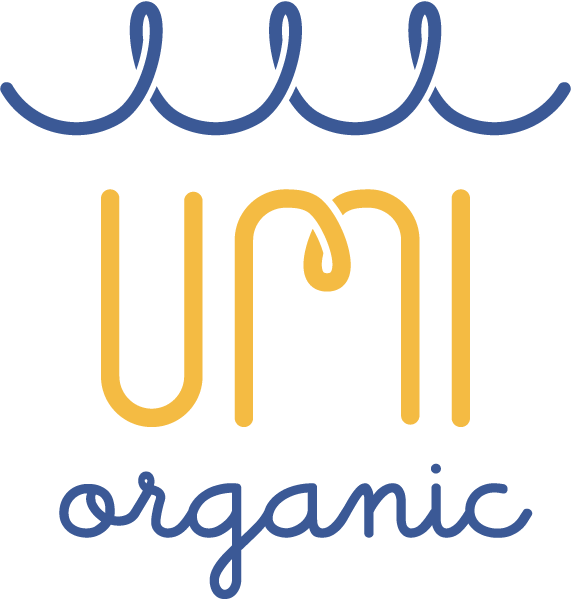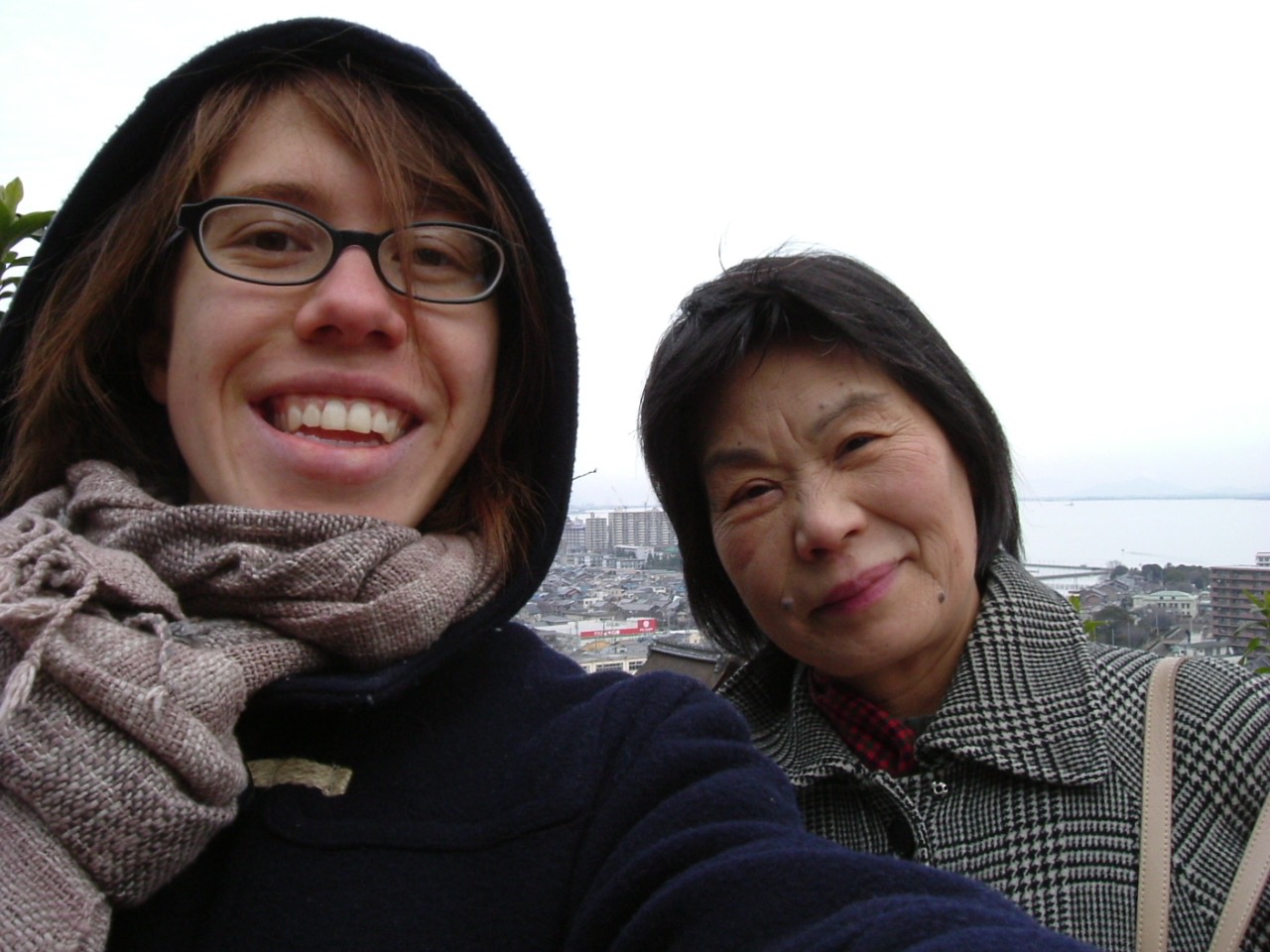By Lola Milholland
Shortly after deciding to start Umi Organic, I scratched down names for the blog I would write. Okay Noodling (Okie Noodling, anyone?). Noodling with Lola. I knew from the beginning that I would write a regular column about this experience. Writing is a significant part of what I did before I jumped into this bottomless ramen bowl of a business and began climbing up a slippery, endless noodle toward the light. I had a sense that what I was about to experience would blow my mind, and then blow it again. I was right. All of the things I was told before starting Umi Organic have become clearer and more intense. And we haven’t even sold our first noodle.
So where are we now? How did we get here? And who am I?
On my first trip to Japan in 1996.
Part 1. Little Girl Japan
Hello, my name is Lola Milholland. I was born in Portland, Oregon in the mid-1980s during the Reagan Administration to two intense, driven yet goofy, counter-culture parents: Theresa Marquez and David Milholland. Both had feet in the sustainable food and cultural arts communities—which is the ground I landed on when I came into the world, and have toddled around ever since.
Japanese multiplication tricks.
In kindergarten, my parents enrolled me in the Portland Public School’s Japanese Immersion program. Neither parent was innately enthusiastic about Japanese. My mom is half Filipino—really a Polipino, half Filipino, half Polish—and the Philippines' history with Japan is gruesome. But they loved the concept of a bilingual public education. I was in the second-ever class of what we called the JMP (Japanese Magnet Program), a fledgling attempt to groom a generation of cross-cultural ambassadors to our economic powerhouse neighbor across the Pacific. Everyday we studied in both Japanese and English. I learned how to multiply and divide in Japanese—which does look different, and more Japanese, than Americanized multiplication tables. We sang Japanese children’s songs and celebrated Japanese holidays. We studied kanji in the morning and cursive in the afternoon.
Standing with my host sister and brother in Toyama on my first trip to Japan, when I was in the fifth grade.
In the fifth grade, my class took our first trip to Japan, staying for a few weeks in rural Toyama and urban Nagoya. What I remember most vividly about the trip is the sweltering heat (mushi-atsui), chasing my first fireflies, fancy robotic toilets, and the array of adorable erasers shaped like fruits. I remember visiting austere, pine tree-ensconced shrines in the countryside and inventing a game called sumo-ballet with my good friends, which we subsequently taught to our Japanese classmates.
I remained in the immersion program through my senior year in high school and traveled to Japan four more times during the period. In sixth grade, I visited organic cooperatives with my mom on a business trip. I discovered that 7-Eleven had an entire selection of flan, and my concept of convenience stores as inherently crummy was shattered forever. I went with my class again on a school trip in the eighth grade, where we rolled the longest sushi roll in the history of Kyogo Prefecture, filled with skinny foot-long hot dogs. (Note: Japanese hot dogs have incredibly snappy skin.) As a sophomore, I spent five weeks in Okinawa on an exchange through the Youth For Understanding program, attending high school, playing on a basketball team as the unlikely tallest girl (at 5-foot-5), and crushing on the boy in my class who drew little golden poops on his papers. And the summer after my senior year of high school, after winning a free plane ticket through a Japanese speech contest, I spent a memorable few weeks traveling with my older brother, singing booth karaoke for the first time, buying Peace-brand cigarettes from a vending machine, and eating every flavor of tea soft serve I could find. During those years, we also hosted more than five Japanese exchange students in our Portland home.
Japanese culture wasn’t something I had sought out, but it became part of me. I wasn’t obsessed with any particular cultural corner, but the overarching quality of Japanese sensory attentiveness had enraptured me.
When I went to college, I knew that I wanted to continue to build on the years I had put in. I attended Amherst College, home of the first Japanese person to graduate from a Western Institution, Shimeta Neesima, later known as Joseph Hardy Neesima, and a lineage of significant Japanese figures. I studied Japanese cultural history with exceptional teachers. And I spent my junior year abroad in Kyoto, Japan. That year, specifically, set me on this course.
Part 2. Beefing Up
As a Junior at Amherst College, I moved to Japan, to the heart of Kyoto, to live with a host family for a year and study Japanese at Doshisha University. I was 20, with delusions of maturity but none of the emotional stability.
Living in Japan was intense from beginning to end. I experienced extreme isolation that put who I am and how I think into hyper focus. I can’t remember when, during that year, I became fixated on Japanese beef—not on eating it so much, but on its history and cultural meaning. But somewhere in that year of extremes, I began seeking out information about Japanese beef. We never ate it at home. My favorite place for an occasional burger, Freshness Burger, served pork patties.
Why was Japanese beef so expensive? I wondered. It seemed almost completely absent from Japanese home cooking, so why was it so famous globally? As I learned more, I become more fascinated. How did beef, once so reviled and literally verboten in Shinto and Buddhist doctrine, become one of the most luxurious, deluxe foods in the nation? Beef in Japan is a symbol heavy in meaning, but what meaning? Why is it such a big deal? Do cows in Kobe really drink beer and listen to Shostakovich? How did the Japanese beef industry form?
I set my course for my senior year of college on studying Japanese beef. I did my college thesis on beef as a metonym for Westernization and how it appeared in Japanese media through the 19th and 20th centuries. (Here's an especially hilarious excerpt.) And though I didn’t become a beef scholar in the long run, I did decide that food, its cultural meaning and power, would be the topic I would chase beyond college.
Me and my host mom Junko Yamaguchi on a day when we visiting potters near Lake Biwa and ate the best hand-cut soba I've had to date.
During that year, I also had the pleasure of spending every night cooking a traditional Kyoto home-style meal with the Yamaguchi family: a mother and her two daughters, one of whom led a graduate program at the Nara Women's College on local food studies. I learned to feel most at home with the base flavor of dashi (kombu kelp and bonito tuna broth) in my meals and to ask after every ingredient, curious about its uses, its spectrum of flavors, its unique story. Junko and her daughters exposed me to the depth of Japanese food culture, with its heightened place-based sensibility and keen focus on flavor. I fell in love. We harvested bamboo shoots and wild canola from the river banks, ate traditional sweets each month redolent in stories of the temples all around us. I learned to scale and gut a fish, what parts are most delicious, how to extract flesh from bones with chopsticks, and how delicious fresh tofu can me.
I also saw how much flavor was being derived from fermented foods (miso, soy sauce, salt koji) with much less dependence on meat. I have returned to that knowledge time and again as I think about how to root ourselves in big, satisfying flavor while rejecting the meat industry as it now operates. The seeds of my current passions germinated in Kyoto.




